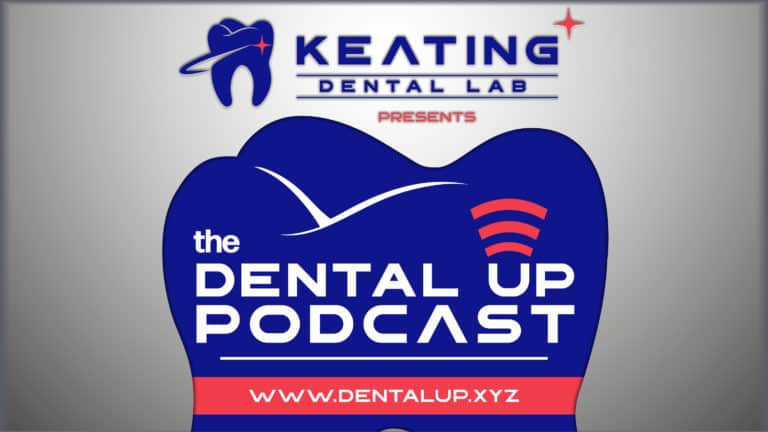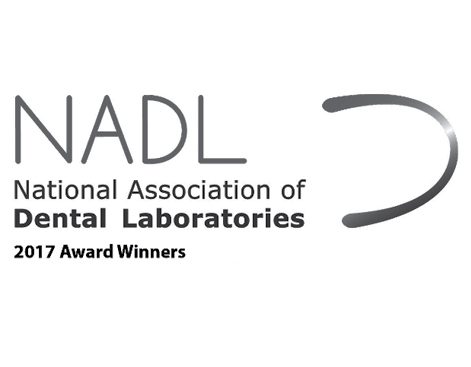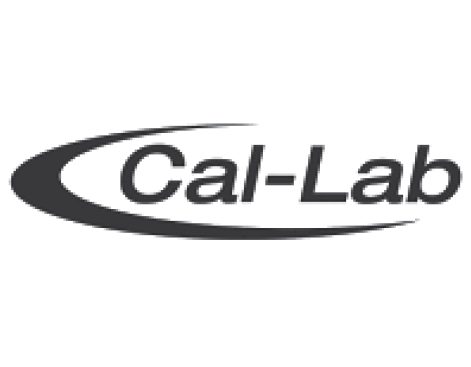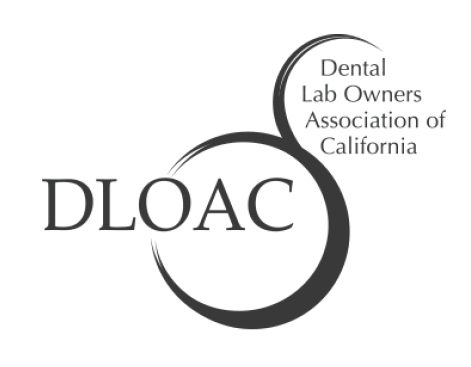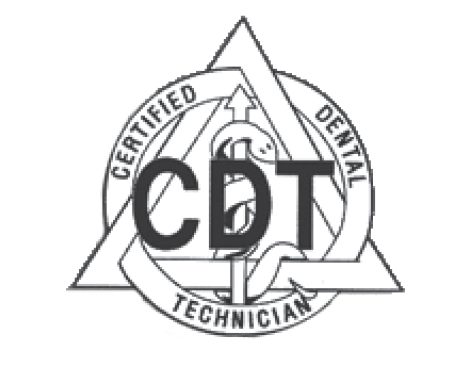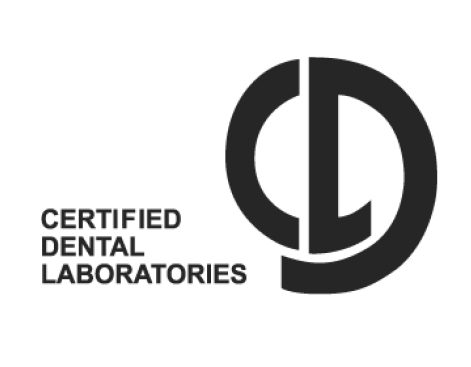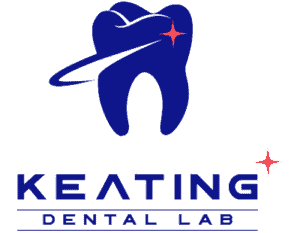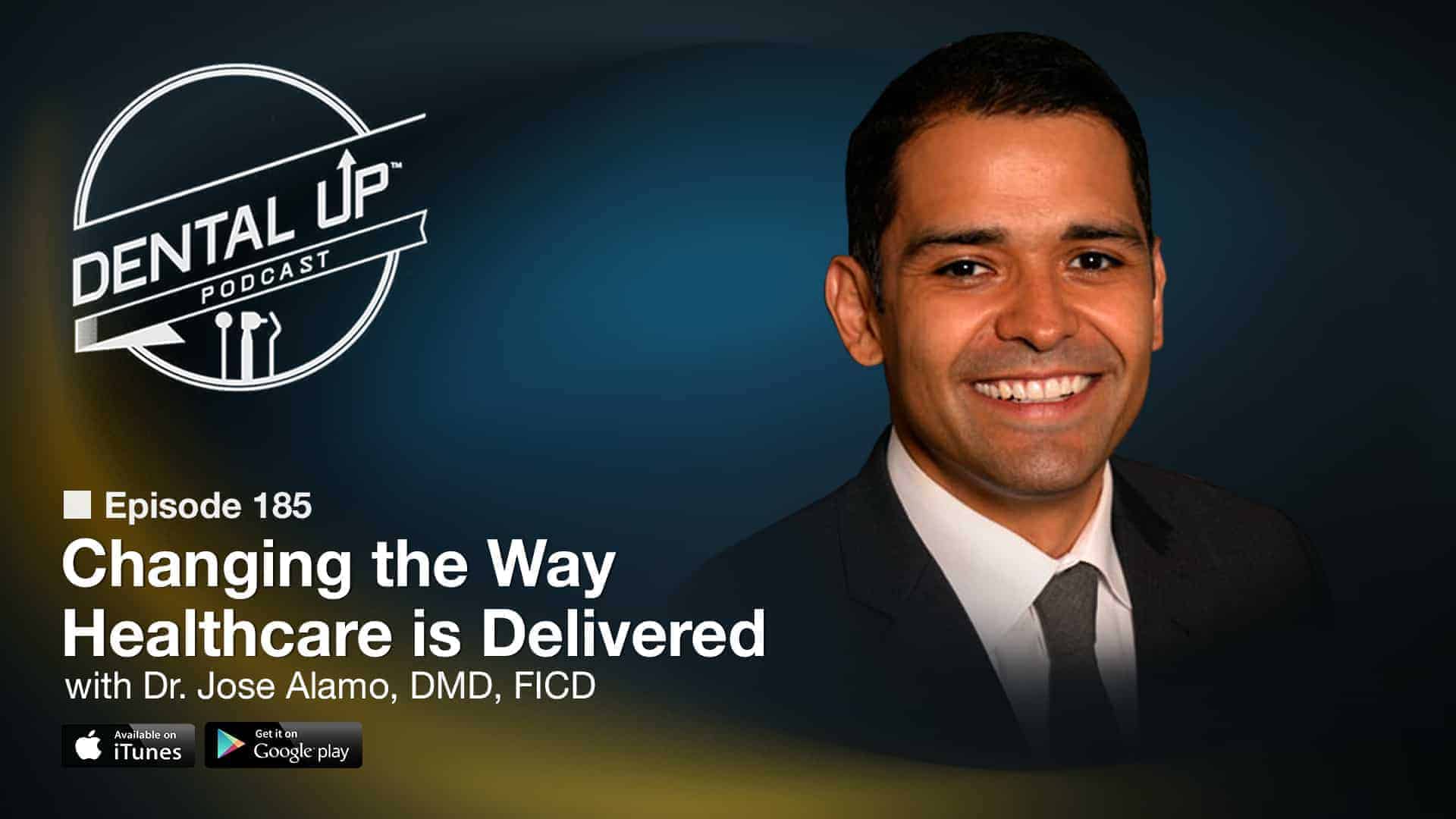
![]()
![]()
![]()
![]()
![]()
Our guest Dr. Jose Alamo, DMD sits down with Brandon Fetters and discuss the importance of mentorships during and after Dental School. Dr. Alamo shares how exposing students to different medical fields early on can help them refocus and find the right career path that works for them. Dr. Alamo also shares his experience in Nicaragua and Panama in providing over 800+ patients with free Dental Services. He goes into detail on his recent induction to the ICO and how his app will help the way healthcare is delivered. You will hear all this and much more on this week’s episode of The Dental Up Podcast.
You will hear on this episode:
– What it takes to provide free services to places in Nicaragua and Panama.
– His involvement with Texas Mission of Mercy and Hispanic Dental Association Clinics
– How the 3M Digital Scanner elevated the efficiency in his practice.
– What is VeMiDoc App
– Why it’s important to research CE Courses to extend your knowledge.
– His viewpoint on mentorships during and after Dental School.
Click here to learn more about Dr. Alamo, his practice and his projects by clicking the links:
Dental Practice: https://smilekyle.com
VeMiDoc Website: http://www.vemidoc.com
Facebook: https://www.facebook.com/neodentistry
[bg_collapse view=”link” expand_text=”View Full Transcript” collapse_text=”Hide Transcript” ] Host: This is the Dental Up podcast, brought to you by Keating Dental Lab. A full service, award-winning dental laboratory. Each week you’ll learn tips and techniques from real world dentists, bringing you in depth interviews, motivating stories, current events, and sports. Here is your special host, the Senior Technical Advisor for Keating Dental Lab, Brandon Fetters. Brandon Fetters: Hey everybody. Brandon here. Welcome to another episode of the Dental Up podcast. Our guest this week earned his Doctorate of Dental Medicine degree in 2006 at Boston University School of Dental Medicine. In 2019, he was inducted as a fellow of the International College of Dentists. Brandon Fetters: He is a co founder of medical technology startup VeMiDoc, a platform focused on health outcomes, and dentistry medicine, and mental health. Currently practicing from Kyle, Texas, please welcome Dr. Jose Alamo, DMDFICD. How’s it going, Dr. Alamo? Dr. Alamo: Oh, just fine. Thank you for having me, Brandon. Brandon Fetters: Yeah. it’s great to have you on the show. Thank you so much for taking the time out of your schedule. Now jumping right in, at what point in time in your life did you decide to get into dentistry, and when did you think to yourself, “Boy, I really want to become a dentist.”? Dr. Alamo: Luckily, I knew early on that I wanted to go into dentistry. I was eight, I met a mentor. I’m from El Paso, Texas. And so, I was working with an attorney as a runner, a few summers in high school, and I knew right away I didn’t want to get into law. And one of the associates there had had a friend, who I went to high school with that was a dentist in town. Dr. Alamo: He said, “You should go visit him. He’s a real nice guy, and see what you think.” So, I went over there, and met Dr. Daniel Castro. He’s still practicing today in El Paso, and I really liked the way he was able to have a profession, and have a life outside of the profession, and still excel in what he dedicated his life to. Dr. Alamo: And so, from that point, I must have been maybe about 18 years old or so. I said, “This is what I want to do.” And I’m still in touch with him today, and early on I knew. I speak with a lot of college students, and they asked me the same question, and they don’t know what they want to do. They change your majors halfway through college, so I think it’s just fine. It’s the time that you learn what you like. Dr. Alamo: And for me, I felt lucky that I knew that I wanted to do this. Brandon Fetters: That’s awesome. Yeah. Where did you end up attending school? Dr. Alamo: From El Paso, I went to St. Mary’s University in San Antonio, and ended up going to Boston University out in Boston, Massachusetts, and it was really awesome. I had never left Texas. I would say at that point of 20 years old. And being east coast for the first time was a very different experience, but it was a great experience. And yeah. So, I went to Boston University, and I was out there for about four years. Brandon Fetters: And when you came out of school, did you start off as an associate or did you purchase your own private practice? Dr. Alamo: No. And I hear that some students will do this right out of a school, and not me. I went into a residency. I did a general practice residency in New York City. I do what’s called a GPR, surgery based. At that point, I either wanted to do periodontics or go into oral surgery, and was learning a lot about implants, and wisdom teeth removal, and some sedation. And so, I did two year residency, one at King’s County in Brooklyn, and another at Cornell in Manhattan. Dr. Alamo: From there, I knew I wanted to go into public health for a few years, and so I did that for about five years, and that was a really, really tremendous experience. Really got to work with population that I know well, and felt I can give back a lot during this time. And then after that in about 2012, I opened my practice in in Kyle, Texas with a very good friend of mine, now business partner. And we’ve been here now eight years. We’re coming up on January. Brandon Fetters: Excellent. Yeah. Dr. Alamo, also, I see down here that you had done some volunteer work in Nicaragua and Panama. Can you tell us a little bit about that? Dr. Alamo: Oh yeah. This has been a very cool experience. I go with a group out of the northeast, they’re mostly from Boston and Rhode Island. It’s a big group of providers included our dentists, physicians, audiologists, optometrists, and physical therapists. And the last time we went, there was 80 volunteers, but we started off by going to Nicaragua. Dr. Alamo: I jumped in about there maybe 12th, 13th trip, and they go every year, and I’ve been lucky to go with them most of years. So, we went to Nicaragua twice, and now I’ve been to Panama five times. The last time I went, 2018, we were able to treat over 800 patients in the dental department alone, and it’s been super cool. Yeah. Dr. Alamo: It’s a remote part of the area, and most of the patients there wouldn’t have access to a dentist. Otherwise, they would have to drive into Panama City, which can be quite far and expensive. Believe it or not, some of the dentistry costs the same in Panama city as it would perhaps in some parts of the United States. And so, it will be unattainable. Dr. Alamo: So, we were able to do some good work, and now the group goes back yearly, and we can see the same patients sometimes and see how they’re doing. Do the exams, and hopefully the next few years we can start doing some more comprehensive work. Brandon Fetters: So, do you go every year? Dr. Alamo: I haven’t been able to as I’ve been getting involved in things like this dental association, and then in my startup. But I think I’ll be going not in 2020, but 2021 again, and I’m looking forward to it. I definitely miss being out there, and definitely ended up taking more than than you give. It’s a natural thing that happens, and I hope that as my career goes on that I’m able to do more social service work. Dr. Alamo: But being able to be in a position where I can do dentistry potentially for free. But that’s kind of a lifetime goal. Brandon Fetters: That’s awesome. Do you know if there’s any plans to expand out to other countries? Dr. Alamo: Not right now. It can be difficult to organize these kinds of trips. We take all of the equipment to these countries. When we went from Nicaragua to Panama, we had to hire a driver to take all the equipment, drive through terrain, and we met them in Panama. Otherwise, we work with dental supply companies, and they donate a lot of things. Dr. Alamo: The composite, the bonding, and we have to carry all that with us. We have to work with the local government there showing our diplomas that we are actually licensed dentists in our states, and without that partnership with the government, it would be very, very difficult. And so, I think that’s the biggest hurdle you would have to jump by going to another country. Right now, we work with the rotary club there in Panama, and they’re able to do a lot of the groundwork that we get there, and we can now have the patients in the facilities to work. Brandon Fetters: So, along the lines we were talking about, can you tell us about your involvement with the Texas Mission of Mercy, and Hispanic Dental Association Clinics? Dr. Alamo: Sure. The Mission of Mercy has been around for a long time, and basically, I look out for emails that they send out. And when they’re in our area within 200 miles or so, I’ll volunteer, and they have a great clinic going on. They must do anywhere between five to eight cities a year, and that’s a really cool program. Dr. Alamo: I know that they’ll do dentures day-of for patients, and typically that will be … It could be a month process, if not longer. There’s that dental association. I’m the Treasurer for the national association as well as co founder of our local chapter. And so, whenever the opportunity arises for me to volunteer at a clinic, like I do in San Antonio for a Veterans Day, most years I get the opportunity to go and give. Brandon Fetters: Excellent, excellent. Now, kind of a reeling back when it comes to your own private practice. How can you describe the layout of your practice, and how have you made it grow throughout the years? Dr. Alamo: Yeah. So, the city of Austin is growing tremendously, and as an effect, the small cities or towns around there are starting to grow as well. I think this is what’s happened in California 20 years ago, and it’s happening here now. And Kyle is one of these cities that’s right in between Austin and San Antonio, and we came out here. Dr. Alamo: There must’ve been about 27,000 population, and it’s grown close to 40 or 42,000, and the projection is that it will continue to grow. Yeah. So, we built our practice here and started with two operatories. We had built out for six, but we have pumped too, and we worked out of there for most of the first year. And we started to add chairs as we had increases in patients, new patients coming through, and now we actually operate from all six chairs. Dr. Alamo: We have three hygienists, our team is 11, and we’re moving, and I’m able to do implant surgeries, bone grafting surgeries, wisdom teeth removal, and we have a prosthodontist that comes in about twice a month, and he’s doing full mouth reconstruction here on patients that would need it. If we have them coming in, we would have to send our patients up north, which could be an hour, an hour and a half for nine times out of the year. Dr. Alamo: So, it’s a big service for them to be able to come down here for a community. Brandon Fetters: That’s great. Now, in doing that, do you have a certain marketing strategy that you’re using, like mailers or social media? Dr. Alamo: That’s an interesting question because when we first started, we didn’t know much about marketing and branding. We don’t learn about this in school. Public relations. So, a lot of the knowledge that I’ve gained has been through looking into websites, and then seeing how other doctors are doing their marketing. Dr. Alamo: We’ve done primarily a grassroots kind of campaign. We go out, and we go to a lot of local events, community affairs. We do a lot of dental education whenever we can. We also go as a team to the the Texas food bank and help hand out food. Dr. Alamo: So, we try to really engaged with the community, and have allowed our practice to grow organically. We have used reviews to help us. We work now with Podium, and Podium they text out our patients, and they write reviews for us, and they’ve been very kind. And I think through through those avenues and to what we do grassroots level organically, patients can kind of feel that, and say, “This is the kind of place that I would want to go get treated.” Dr. Alamo: And other than just behind chairside, we let the word of mouth kind of dictate our growth. And it’s been slow and steady, but I think that we build things this way, they last. And that’s been our strategy really. We do a one local newspaper, and they work with businesses kind of like the heartbeat of the city, and where are the new restaurants, what’s going to be built in these areas? Dr. Alamo: We do a small advertisement there, and that’s given to all the residents here for free, and so they can see us there. But there haven’t been mailers so much, and I really do think most of it has been an organic kind of referral basis. Brandon Fetters: That’s great. Yeah. Awesome. Now, Dr. Alamo, when when it comes to doing procedures, do you have a certain procedure that you would prefer to do more than others? One that’s say your favorite. Dr. Alamo: Yeah. I really enjoy doing a lot of surgery, and so as it pertains to implants and bone grafting, wisdom teeth removal, I really enjoy working with with these procedures. The removal of teeth, you do it, and you’re done, and everything heals up just fine. With implants, when you combine that with a crown, we’re really able to really change the ways somebody looks and how they’re functioning. And I liked that we’re able to do that. Dr. Alamo: And bridges are good when they’re necessary, but we can get implants in them. We’re giving something back to the patient they didn’t have before. And so, I really enjoy implants and what it’s meant to our practice, and to dentistry as a whole. Dr. Alamo: And I know more and more general dentists are doing them. They’re very predictable treatment option, and I’m starting to do guided surgeries with stints, and we’re able to base those implants in practically the most perfect position. And that has been a very enjoyable process of planning those out, and putting them in. Brandon Fetters: Great. Yeah. Now, just to get your thoughts on this, Dr. Alamo, what are your feelings about these new impression scanners and CAD cam technology in dentistry? Dr. Alamo: Oh, very cool. Yeah. So, we have a 3M digital scanner, and I think we were all … Doctors and staff included, like, “How are we going to integrate this? Who’s going to get good enough to use this, so that it becomes an efficient part of our treatment process?” Dr. Alamo: And we have staff members now that are able to use it. They’re able to take the scan under two minutes, and we’ve grown from using it to single tooth restorations to doing bite cards with them doing both arches for ClearCorrect, which we use at our office, and it’s been amazing. I think that the literature says that it’s 97.8% accurate, and I found that out when I use it and we see their crowns because sometimes I have to take traditional impressions. Dr. Alamo: When I use it, when I’m able to use it, that those crowns seat with minimal to no adjustment. And likewise, we were doing traditional impression methods for ClearCorrect, and we started using the digital scanner, I mean, they were popping in beautifully. And so, I’m a big believer in digital scan, and I think it’ll be the standard of care. If not now, then in the near future. Brandon Fetters: Yeah. Well, that’s great. Dr. Alamo: Yeah. Brandon Fetters: Do you have any other pieces of equipment that you’ve recently added to your practice? Dr. Alamo: That one is probably the most recent, and then adding implants as I mentioned. But I think the next thing we’re going to buy is a CBCT, and right now we’ll refer out to a local dental office to do our CBCTs, and I just find that I have a big stack of CDs in my office right now. And I was like, “We’re needing it, we’re using it.” We need to get one, and it’s really going to be the next bit of equipment we hopefully get in next several months. Dr. Alamo: But as far as planning for implants as you know, and then also seeing where the inferior alveolar nerve is for me, taking out wisdom teeth is another huge benefit. And yet another piece of equipment, which I think will be standard sensitive care in dentistry in the next several years. Brandon Fetters: Yeah. Most certainly, I have to agree. Now, I see here that you were recently in … Ooh, let me try that again. I see here recently you were inducted into the ICO. I just want to say congratulations on that. Can you tell us a little bit more about that, Dr. Alamo? Dr. Alamo: Yeah. That was a huge honor, and they’re looking at dentists that have given back to their community, and continue to do so. And it’s pretty awesome that somebody was able to look into my resume or the things I’ve done the past, and decided to invite me into this group. Dr. Alamo: And it’s good to know that you’re in good company, and people are saying good things you. It was unexpected, and I didn’t apply for this. People recognizing that my work in working in Central America, and then through organizations like the dental association that they thought that I should be part of this fellowship. A huge honor. Brandon Fetters: That’s pretty cool. Especially like you’re saying, you don’t even realize it’s coming, and then you get that. Dr. Alamo: Yeah, yeah. It’s pretty cool. Brandon Fetters: My producer had actually shared some notes also about this app that you created. Can you tell us more about that? Dr. Alamo: Yeah. That’s been really cool. I’ve been working a lot on this. It’s my startup called VeMiDoc, and we have co founders. One of my co founders is a gastroenterologist for pediatrics, and my other is our CTO who used to work for Apple, and we developed basically a telehealth platform. But we’re most interested in health outcome, and how we can use this platform to improve health outcomes. Dr. Alamo: We’ll be using the platform in El Paso, Texas, where I grew up, and right now primarily it’s used in medicine. But I do use it in my office. I do a lot of postop for implants and also for my surgeries, and it can be a very effective tool. I like seeing the patients after a surgery to see how they’re doing, and oftentimes it can be a burden for them to come in, especially if they’re feeling just fine. Dr. Alamo: But this allows us to touch base that allows them to see me. I can show them diagrams if they want to learn more about something we may be having, and it’s that one extra step outside of a phone call, and we can see each other. I think in the future, there will be a huge opportunity. These are kind of big ideas where everybody in the State of Texas or throughout the country would be able to have access to getting teeth cleaned, getting an exam or getting sealants placed, and fluoride applied, having that part of the population that has cavities go to the dentist. Dr. Alamo: And so, this would minimize a lot of travel, especially for those people living in rural areas or who don’t have mobility to get to the dentist. For example, if we did screenings in schools, and we say 10% of that school population had cavities, we can learn about that, and we can help those kids get to the office where you can’t do telehealth to come do a filling. But we can only get that, that population to go and get those done. Dr. Alamo: I think there’s a great opportunity in orthodontics, which I’ve seen already telehealth already being used in the field. But I think it’s something that we’ll be getting very used to, and can be part of of how we intake health. That being in medicine and mental health, physical therapy, dentistry, you name it. I think it would be part of who we are, and how we deliver health. Brandon Fetters: Yeah. Yeah. Now, speaking of traveling, do you attend many dental conventions or gatherings? Dr. Alamo: I do as we have many conferences through the Hispanic Dental Association, and as we tried to remain a presence. So, we do attend a lot of conferences. I was just in San Francisco for the ADA conference, and also for the induction for ICIPD. And it was awesome. Dr. Alamo: I still think there’s a need for in-person conferences. You might be exposed to things that you didn’t know about in the field supplies, these kinds of things. But also, I think though, which a lot of people don’t talk about is just the networking, and how important it is to continually have a touchstone with your colleagues, and see how they’re doing, see what’s going on, what’s new. Dr. Alamo: Say your friend had, and he has a CBCT, and say, “How is it? And do you trust his advice?” You can certainly do it on the phone call, but it seems when you go to conventions, it becomes a lot about dentistry, and everybody gets really excited about it again. Sometimes we need that. Brandon Fetters: Yeah. That’s awesome. Dr. Alamo: Yeah, yeah. And then I’ll be in the Greater New York meeting here at the end of the year. The HTA does a mini conference just before, and I’ve been doing that for three years now, and it’s a great time to be in New York. It’s a lot of fun. Yeah. I still attend these meetings. Brandon Fetters: Now, Dr. Alamo, do you have any advice that you would give to newer dentists entering the field? Dr. Alamo: Yeah. I was thinking about this, and there’s so much. There’s definitely so much. And there’s a lot of continuing education out there, and they’re all very, very good. I would say two things. I would say do research on these comprehensive CEs out there as it pertains to someone like the Kois Center or Spear Study Club, Clinical Mastery Group, and see it through. Dr. Alamo: It can kind of be like your fifth year of dental school. You learn so much in that time, and you’ll find mentors who you continue to work with, and it’s a great thing that you can take with you. As part of those continuing education seminars, I think occlusion becomes one of the most important things that we learn in dentistry. Dr. Alamo: We learn about how to make occlusion in harmony with your muscles, and your condyle, and the mandibular fossa. We can take a patient out of pain, we can set all sorts of prosthetics, a prosthesis crown without them breaking. It saves you from a big headache, and you can really help your patient out a lot by learning occlusion, and I think that’s really important. Brandon Fetters: Yeah. Now, obviously we had that the application that you had helped develop. Do you have any other projects that you’re currently working on that you’d like to promote? Dr. Alamo: No. I think between the startup, and well, you know what? What we do also is I go speak at the University of Texas and at St. Edwards because they’re local, and I talk to their pre health program, and I present dentistry as a career path. And so, I’m really involved in mentorship, and I really do think that’s where the power of growth is. Dr. Alamo: I talked about doing the continuum and CEs, and that’s a mentorship pretty much. And I like to do this at the college level to talk with these kids. They come in my office and they see what it’s like to be a dentist, and they choose if it’s something that they like and want to pursue or they say like, “No. It’s not something that I want to do.” Dr. Alamo: A few years ago, I had two students coming through here. One of them was, “Sure.” He was going to do premed, and he came to the office, and we liked what he saw what we were doing. He got up to medical school, and at that point decided that he liked dentistry. And people went that year to medical school applied the following year, and now it had been his second year in San Antonio. Dr. Alamo: And so, I think exposing the students to all sorts of healthcare fields, if that that’s what they want to do, is really important because you don’t know, and sometimes you can kind of get tunnel vision into one area and think that’s all you want to do. And so, I like to provide that an opportunity for these kids to see dentistry. And I stay in touch with them, and I only started doing this four years ago, and it’ll bring me great joy to see them practicing, and for us to get more into dentistry, and what they can do to become better dentists. Brandon Fetters: It seems like 2019 has been a really great year for you. Dr. Alamo: Oh yeah. Super busy. A lot of fun. Brandon Fetters: That’s awesome. Well, Dr. Alamo, I really appreciate you taking the time to get on our show. We’ll be sure and have all your information and the links below, so that our listeners can go ahead, and click them, and follow up on that. Again, thank you so very much. Dr. Alamo: Thank you very much for having me. I really appreciate it, and have a good day. Thank you very much. Brandon Fetters: Oh. You too. Take care. Bye-bye. Host: Thanks for joining us on the Dental Up podcast show this week. Make sure to follow us on Facebook, Instagram, and Twitter, or search the Dental Up podcast on iTunes for our weekly feed. Don’t forget to visit KeatingDentalLab.com/promo for exclusive offers. Host: Keating Dental Lab is a full service dental laboratory, and we’re nationwide. We’d love for you to send us a case, so we can show you the Keating Difference. If you dig what you heard, please leave a review on iTunes, and we’ll be back next week. [/bg_collapse]



